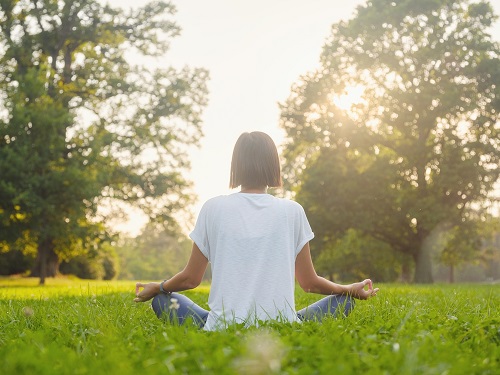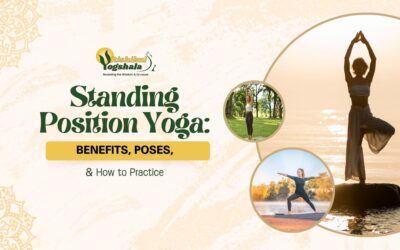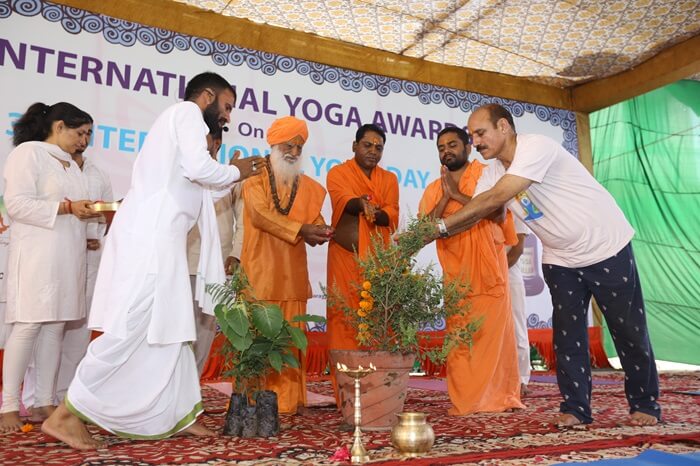The Power of Breath: Transforming Your Life with Yoga Breathing Exercises
Many of us experience phases of overwork and mental strain, leading to exhaustion and negative thinking. Often, we struggle to pinpoint what is missing from our lives, and it might just be breath.
In yoga, breath—or prana—is the eternal force that drives the chariot of life. Our naturalization to this perpetual process often makes us unaware of its transformative power. By becoming more mindful of each breath, we can experience life more gloriously. You can either take control of your life at the most fundamental level by mastering your breath or let it flow randomly, influenced by external forces.
Yoga breathing exercises, or pranayama, are key to unlocking a range of interconnected benefits for both body and mind. Changing your breath can alter the rhythm of your life. Here’s how you can harness its strengths for improvement:

Unlock Inner Awareness Through Mindful Breathing
Cultivate the habit of stopping and observing. Meditation involves detaching from the present state and watching phenomena unfold. Anchor this process on the inflow and outflow of your breath. Observe how your thoughts calm as your breathing slows, and how an excitable state of mind is reflected in short, strained breaths.
Awareness of your breath will make you more knowledgeable about yourself. By understanding the connection between mind and breath and their effect on bodily movements, you can fully control your experience of joy, sorrow, rest, and vitality.
Dirgha Pranayama: The Complete Breath
Dirgha Pranayama focuses on concentrating prana in three areas: the lower abdominal region, the thoracic area under the sternum, and the upper chest clavicle region.
Technique:
- Sit or lie in a relaxed posture, close your eyes, and focus on your breath.
- Inhale through the nose, observing how your torso lifts as air fills your lungs.
- Start with your hand resting on your rib cage, moving to the abdominal and chest areas as you inhale.
- Absorb air into the last chamber of your lungs, then exhale forcefully.
Dirgha Pranayama can revitalize nerve centers, enhance oxygenated blood flow, correct shallow breathing, invigorate digestive fire, and aid in waste and toxin removal.
Nadi Shodhana: Alternate Nostril Breathing
Due to stress, toxin accumulation, and unwholesome living, subtle energy channels (nadis) in the body can become blocked. Nadi Shodhana, or alternate nostril breathing, helps clear these blockages.
Technique:
- Sit upright with your hands on your knees, palms open in the Chi Mudra.
- Place your right-hand index and middle fingers between your brows, with the ring and little fingers resting on your right nostril.
- Press down your thumb on the right nostril and exhale through the left nostril.
- Reverse the process by inhaling through the left nostril and exhaling through the right.
Nadi Shodhana benefits include calming and centering the mind, treating circulatory and respiratory disorders, generating body heat, and balancing the logical and emotional aspects of the brain.
Kapalbhati: Skull Shining Breathing
Kapalbhati, meaning “skull shining,” is more than a glowing forehead; it signifies sharpened intellect and vitality.
Technique:
- Sit with an erect spine. Inhale deeply, then exhale forcefully while pulling in your stomach.
- As your navel moves towards your spine, feel your abdominal muscles contract.
- Perform 20 breaths, then relax and observe.
Kapalbhati enhances metabolic function, supports weight loss, clears energy channels, stimulates digestive fire, and brings inner peace.

Conclusion
Mastering yogic breathing techniques like Dirgha Pranayama, Nadi Shodhana, and Kapalbhati can transform your mind and body, promoting clarity, vitality, and inner peace. By incorporating these powerful practices into your daily routine, you can achieve balance, detoxify the body, and cultivate mindfulness. Whether you’re deepening your personal practice or aspiring to teach, our 200 Hour Yoga Teacher Training and 300 Hour Yoga Teacher Training India provide the perfect opportunity to explore the profound impact of breathwork on overall well-being.
















